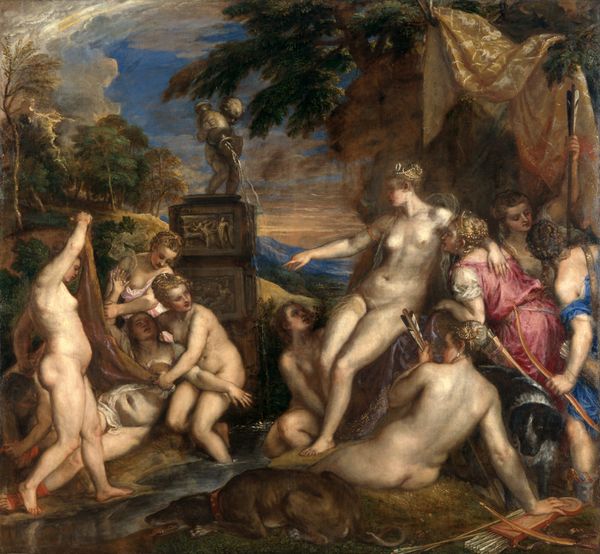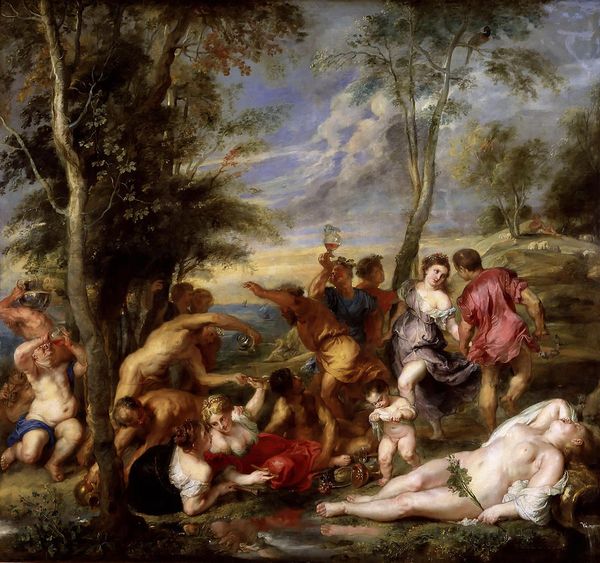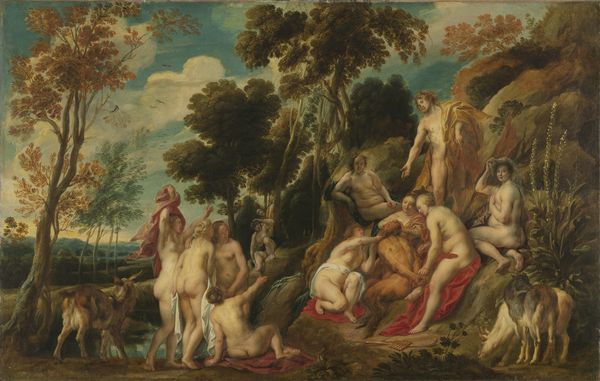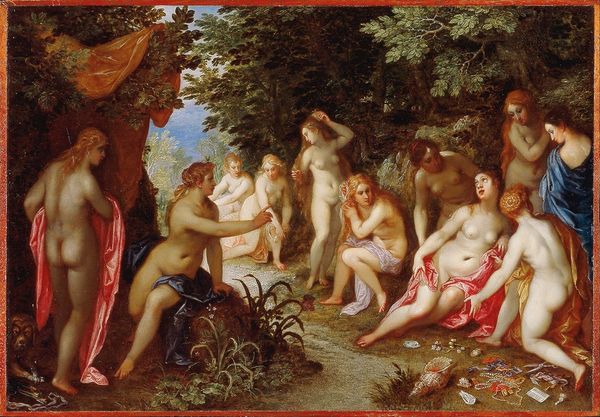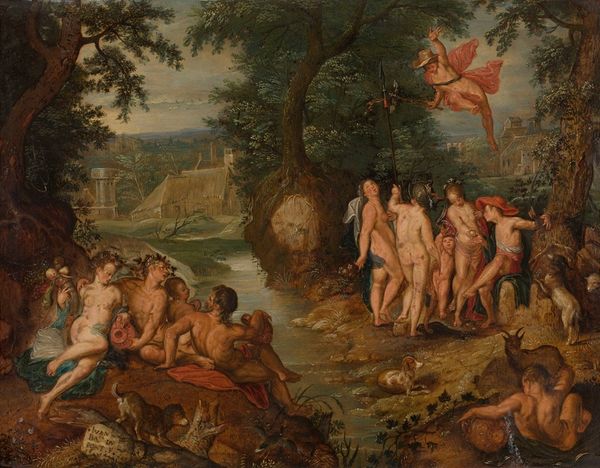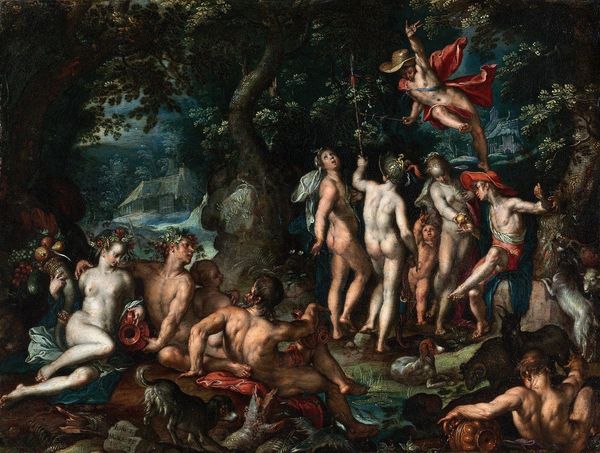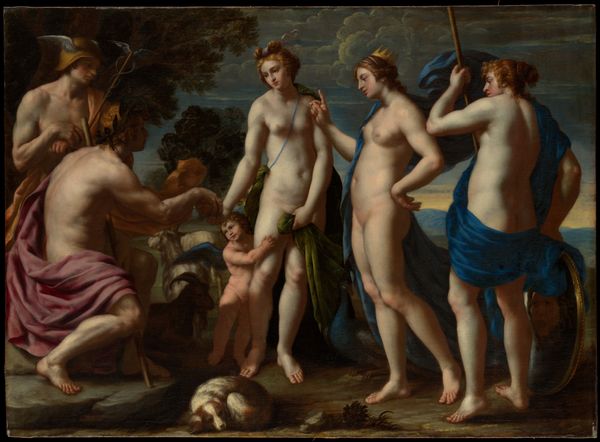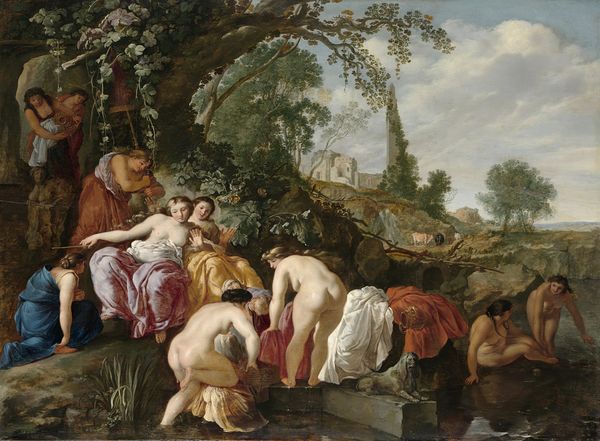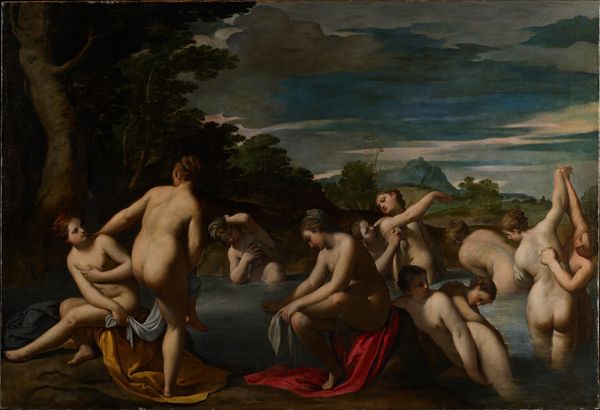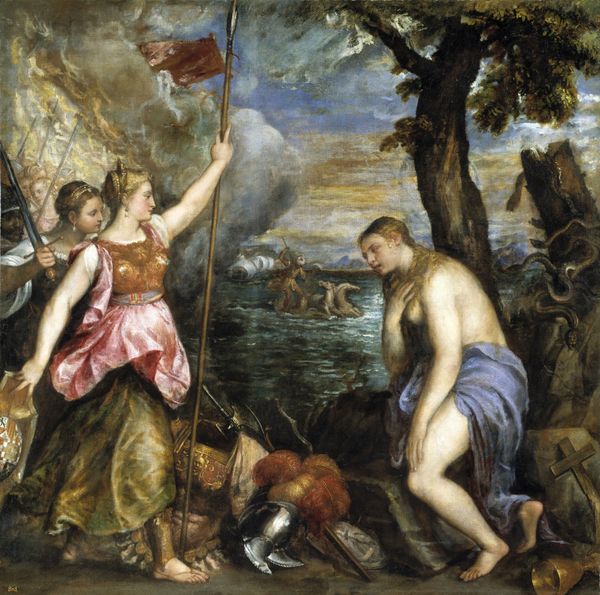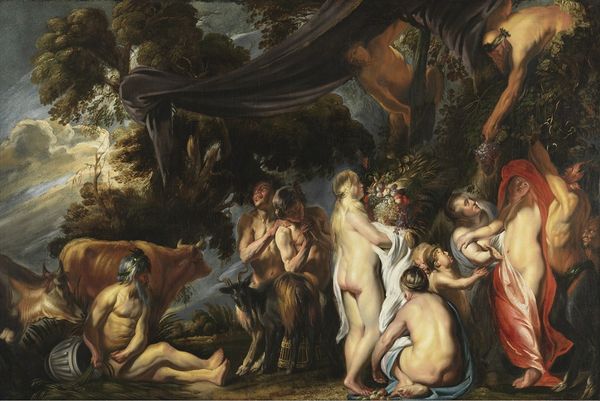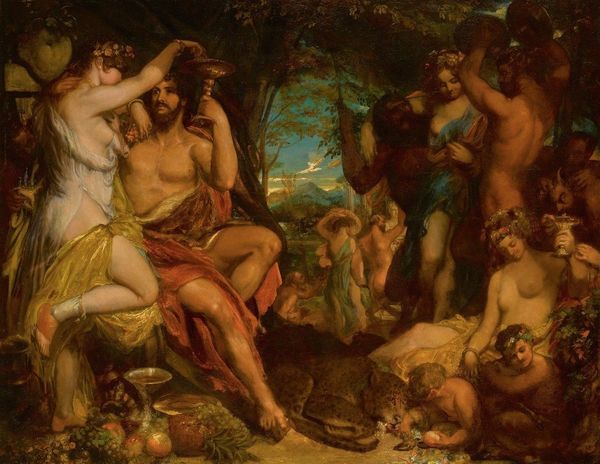
painting, oil-paint
#
painting
#
oil-paint
#
mannerism
#
figuration
#
oil painting
#
roman-mythology
#
mythology
#
history-painting
#
italian-renaissance
#
nude
Dimensions: 190.3 x 207 cm
Copyright: Public domain
Titian painted 'Diana and Actaeon' with oil on canvas, likely sometime in the 1550s. The very scale of this painting tells us something. Large canvases like this were luxury items. To produce it, Titian would have employed assistants to prepare pigments, stretch canvases, and apply initial layers of paint. Consider the cost of this labor, and of the ultramarine blue pigment, derived from lapis lazuli - all part of a complex economy. But the true marvel is Titian's personal skill. Note the way he builds up layers of translucent glazes to create depth and luminosity, a technique perfected in Venice, where the light reflects off the lagoons. Look closely, and you can see the texture of the canvas itself, deliberately left visible in certain areas to create a sense of immediacy. This wasn't just a painting; it was a carefully constructed object, reflecting the social status of both artist and patron. By understanding the materials and making of this piece, we can appreciate not only its aesthetic beauty but also the complex social and economic forces that brought it into being.
Comments
No comments
Be the first to comment and join the conversation on the ultimate creative platform.
